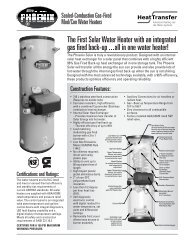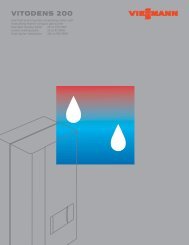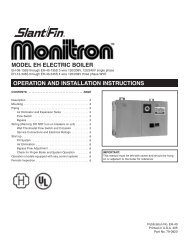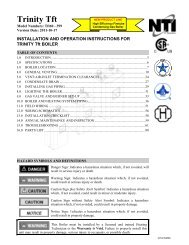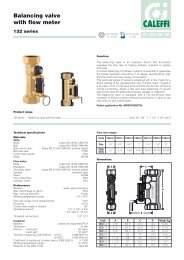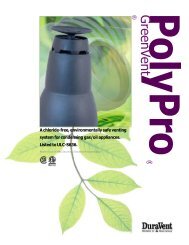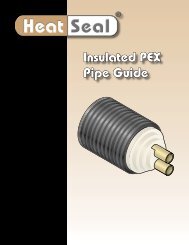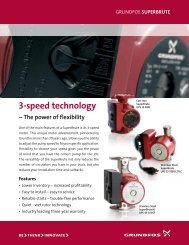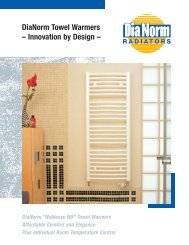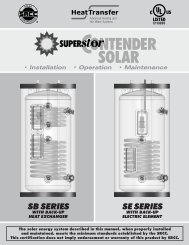Apricus Solar Water Heating System Installation and Operation ...
Apricus Solar Water Heating System Installation and Operation ...
Apricus Solar Water Heating System Installation and Operation ...
You also want an ePaper? Increase the reach of your titles
YUMPU automatically turns print PDFs into web optimized ePapers that Google loves.
<strong>Apricus</strong> <strong>Solar</strong> Collector <strong>Installation</strong> & <strong>Operation</strong> Manual - USA3. <strong>System</strong> DesignNOTICE<strong>Apricus</strong> provides the system design information contained herein as a guide only <strong>and</strong> doesnot guarantee the accuracy of such information. In ALL cases the system design <strong>and</strong>installation must adhere to local codes, regulations <strong>and</strong> guidelines <strong>and</strong> the suitability <strong>and</strong>safety of the system design may need to certified by a licensed engineer, <strong>and</strong> finallyinspected by a plumbing inspector. All systems must be installed by Authorized Persons.3.1. Type of <strong>System</strong>sThe three most common system formats for solar thermal hot water installations are described below:a) Direct Flow systems have potable water under the water main’s pressure flowing directly through thesolar loop piping into the collector <strong>and</strong> back down to the storage tank. These systems are suitable for areasthat do not fall below 23°F (–5°C) at anytime throughout the year. Freeze tolerance limits are based uponassumed set of environmental conditions.b) Closed loop installations are suitable for cold regions <strong>and</strong> use an “anti-freeze” heat transfer fluid, insteadof potable water. This fluid is not mixed with the potable water. Heat transfer occurs through a coil heatexchanger within the storage tank or an external heat exchanger.c) Drain-back installations are suitable for both cold <strong>and</strong> warm regions <strong>and</strong> when the pump shuts off, anyfluid in the collector <strong>and</strong> solar loop piping drains back down into a reservoir tank located within aconditioned, interior space, thus preventing overheating or freeze related issues. This removes the need touse a freeze resistant heat transfer fluid, but requires more carefully planned pipe work <strong>and</strong> a largercirculation pump. As a general rule, the solar collector <strong>and</strong> piping must be sloped at 1/4” per foot angle toallow complete drainage. 90° elbows should be avoided on the pipe run, with sweeping bends or 45° usedinstead. There must be no potential air traps in the line as it can result in water remaining in the piping.<strong>Apricus</strong> has developed a set of system designs covering each direct flow <strong>and</strong> closed loop formats. Refer tosection 10 for more information.Refer to <strong>Apricus</strong> OG-300 specific documentation for system diagrams.For drain-back systems <strong>Apricus</strong> recommends using industry accepted drain-back tanks.3.2. <strong>Solar</strong> Collector & Storage Tank LocationSummer3.2.1. Collector DirectionSpring/Falla) The collector should face as close to True South as possible. A deviationof up to 15° to the East or West is acceptable <strong>and</strong> will have minimal effect oncollector performance. If installed due east or west, the solar collector outputwill be considerably reduced, with predominately morning output or afternoonoutput for each direction respectively. If a choice can be made, west ispreferable over east as solar radiation levels are often highest earlyafternoon. NOTE: <strong>Installation</strong>s at or near due East or West will mitigate thepassive tracking effect of the round absorbers within the <strong>Apricus</strong> evacuatedtubes.WinterSouthCopyright 2011 – <strong>Apricus</strong> Inc Doc: A7-05.4.1.4-PB-1.9 Page 12 of 126



